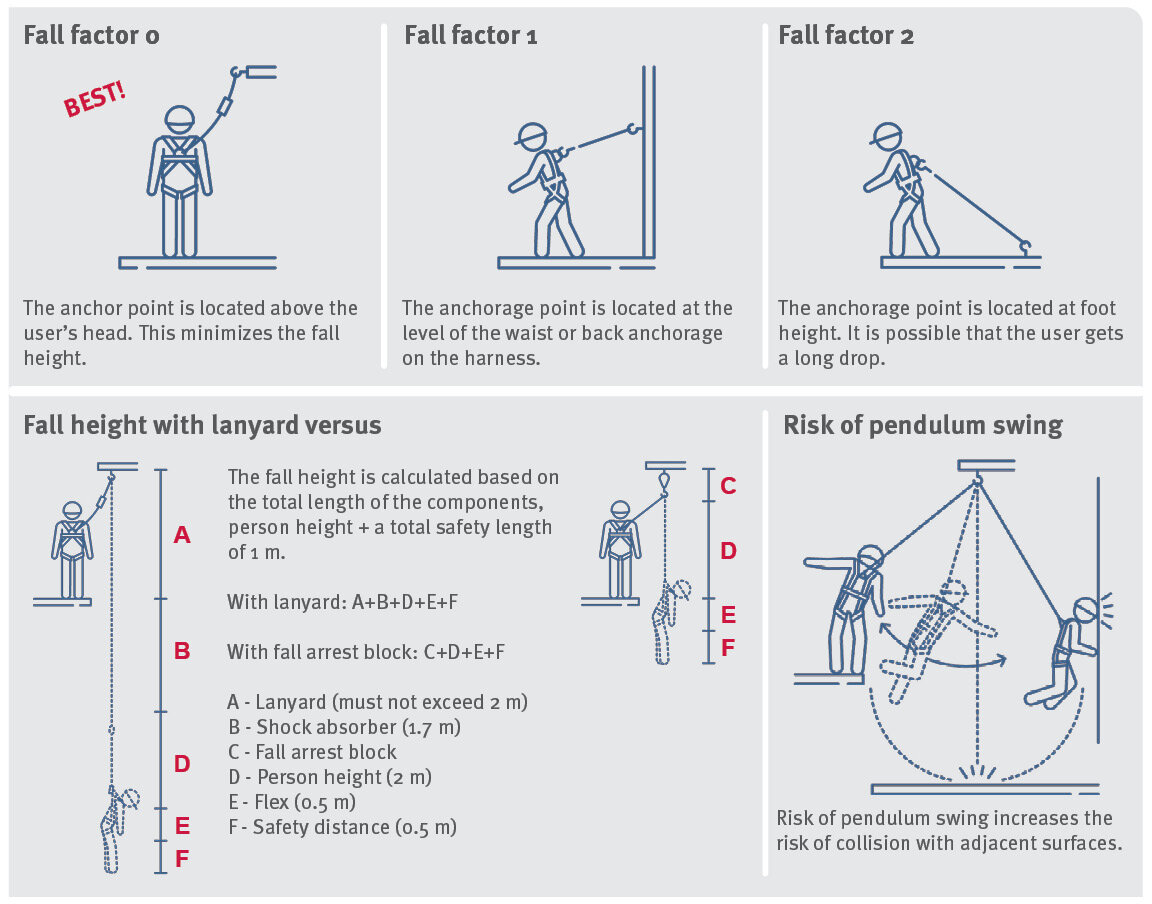Height Work Risks Assessment

When engaged in tasks at elevated locations, a comprehensive evaluation of potential risks is crucial. To ensure the efficacy of fall protection in the event of a descent, three critical factors demand consideration: fall factor, fall height, and pendulum risk.
Fall Factor
The fall factor is a key metric for gauging risk in environments prone to falling hazards. It assesses the potential fall height a user might experience. By striving for a higher anchorage point, corresponding to a lower fall factor, the user can mitigate the risk of contact with lower levels, such as the ground or a ledge. In situations where the fall factor exceeds 1 or the freedom of movement surpasses 0.6 m, the use of fall protection equipment with a shock-absorbing function becomes imperative.
Fall Height
The effectiveness of fall protection relies on the availability of free space beneath the user, allowing the equipment to break the fall. The fall height is influenced by the selected equipment and the placement of the anchorage point. Opting for fall protection blocks can minimize the fall height, as illustrated in the accompanying figure.
Pendulum Swing Risk
To avert injury in the event of a fall, the fall protection system's anchorage point should be vertically aligned directly above the user, with a maximum angle of 15 degrees to prevent pendulum swing. If anchoring the fall arrest system near the workplace is unfeasible, utilizing points on each side of the user with a double line or double fall arrest block can prevent pendulum swing. In roofing scenarios, reducing the risk of pendulum swing can be achieved by placing the anchorage point in a corner, 2.5 m away from each edge.
It is recommended to use a fall safety helmet with a chin strap, to prevent head injuries in the event of a drop!


Do you wish to know more about fall arrest equipment? Reach out to our expert today!
For faster response, call us directly at +47 468 46 232
ConsiderationsIt is crucial to adhere to regulations specifying that individuals performing tasks where there is a risk of falling from two meters or more must implement protective measures to mitigate such risks. |
Learn more |
Fundamental UnderstandingBreaking down the essential components into items forms a holistic personal fall protection system. |
Learn more |
Height Work RisksTo ensure the efficacy of fall protection in the event of a descent, three critical factors demand consideration. |
Learn more |
Preparation GuidelinesEmbarking on work at significant heights demands not only the correct equipment but also adept handling from you as a user. |
Learn more |


